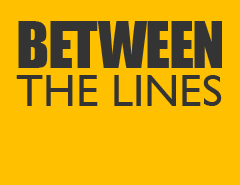 In many trading articles and on many trading forums, the concept of moving a stop to break even is often discussed. The concept is fairly straightforward to understand; when you’ve entered a trade, you’ve used a stop and you’ve predicted the trade correction correctly, you then simply move the stop to a ‘break even’ position immediately the trade is into profit; it reads as the perfect solution…
In many trading articles and on many trading forums, the concept of moving a stop to break even is often discussed. The concept is fairly straightforward to understand; when you’ve entered a trade, you’ve used a stop and you’ve predicted the trade correction correctly, you then simply move the stop to a ‘break even’ position immediately the trade is into profit; it reads as the perfect solution…
On the surface the idea behind the concept of moving stops to break even appears sound, after all, don’t we as analysts continually promote keeping the risk of our trades to a minimum through the effective use of stops as part of the money management discipline we encourage you to embed in your trading plan? What better way to exercise tight money management and control risk than by moving the stop to lock in profits and protect against a good trade going bad. And aren’t we also continually told that you should ”never let a winner turn into a loser”?
Who could argue with these highly practical and effective points. However, despite the theory appearing sound, the practical issues can often demolish the concept of moving the stop to break even. Many traders adopt this concept on the wrong time frame and using the wrong metrics, let us explain…
As many of our readers will have deduced whilst reading our recent articles (specifically our weekly trend analysis) we tend to use the daily time frame for all of our discussion, examples and analysis. There are many reasons for this. Firstly, in terms of our swing/trend trading analysis, only the daily time frame or the weekly is relevant. Secondly, our advice to traders is to trade less and earn more and to use the daily time frame to accomplish that goal.
Now in many ways that second message may appear to be counter-intuitive, particularly given that many within our community appear to regard trading as a ‘personal battle’. However, we’re in the business of wanting to create long lasting trading relationships with our clients, we don’t want to see them fail through poor advice.
Thirdly if we concentrate on the daily chart not only are we all ‘singing from the same hymn sheet’ when it comes to comparing and contrasting styles, strategies, methods and overall trading plans, we’re also trading off the time frame that many creative minds within our industry (past and present) designed their indicators and or strategies to work best. And if by coincidence, the move the stop to a break even strategy, probably works best on the daily time frame compared with many of the lower time frames many traders look to trade off, such as the fifteen minute or five minute.
Breakeven; where it can be wrong.
Perhaps the biggest mistake traders make with regards to moving stops to break even is on the selection of time frames. With small stops on the lower time frames pushing the stop to break even too early can lead to many potentially good trades reversing direction quickly and the stop being executed at break even. So what solutions can we look for in order to negate the potential of reversals on the lower time frames? Sadly there aren’t any solutions, other than moving up the time frames.
If traders trade off, for example, a fifteen minute time frame and they’re using a 1:1 R:R strategy, possibly using a 20 pip stop with a 20 pip take profit limit order, with a plan to move the stop to break even, then the chances are they’ll be caught in a trading range as opposed to a break out to the upside or downside. With this type of trading traders tend to conduct their trades manually and if the trade goes in the red early on in its development traders tend to panic and immediately move their stops to a break even position, believing that they’re now in what’s termed a “free trade”. However, in this situation we’re into no more than a coin toss, the chances of the trade going the right way in a ranging market are unquantifiable. Can this situation change if we move up the time frames? Yes is the short answer…
Breakeven; where it can be right.
Compare and contrast the situation if we move up to, for example, the daily time frame, or perhaps the four hour time frame in order to look for our high probability swing/trend trading set ups. The probability is that our opportunities for our trend trades are triggered by a high impact news event altering sentiment dramatically.
Perhaps we use a 200 pip stop for our trade looking for a 1:2 R:R. The trade may move into profit by 200 pips, we observe the charts and the recent daily ‘price action’ candles are positive in terms of our trade direction and we move our stop to break even having taken the decision (calmly and objectively) that the trend is most definitely our friend in relation to the trade. We make the calculated decision that the trade is unlikely to reverse and take out our stop. However, the critical difference in this trading situation is that we’re not in a position of needing to make a rash or rushed decision; we can observe our trade development from the distance and the comfort of our higher time frame strategy.
We’ve bought time in order to make our decisions and can take a far wider, holistic view of overall market conditions. Crucially we’ve also bought ourselves time and pips to decide that, if the trade does reverse, we can still lock in a certain amount of profit by closing the trade early, if our plan allows for such intervention. A luxury we wouldn’t be afforded on lower time frames.






Comments are closed.